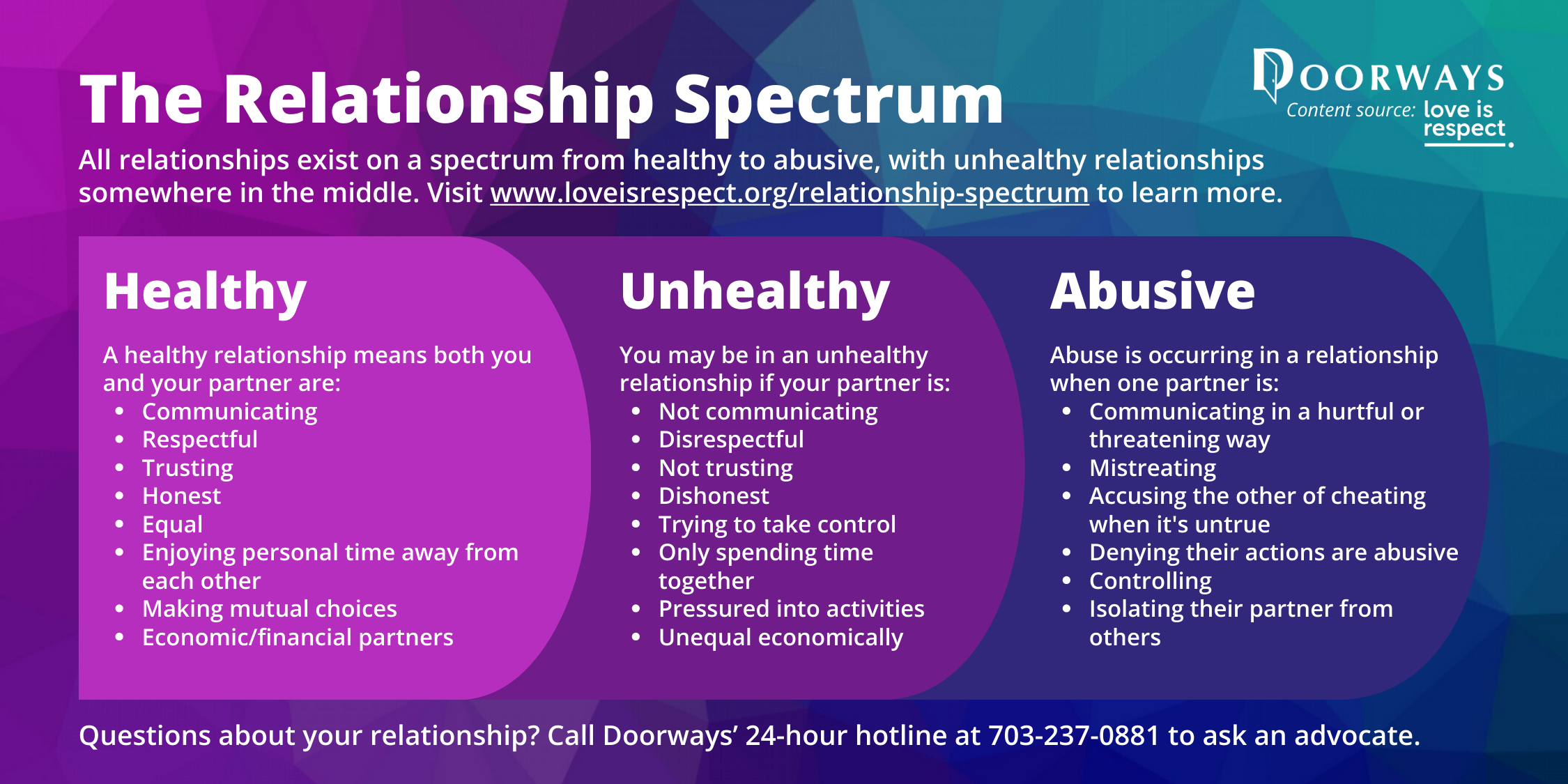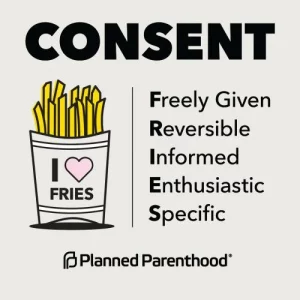Frequently Asked Questions
- What is domestic violence?
- What are warning signs of abuse?
- Is [this] abuse?
- What are sexual violence, sexual assault, and rape?
- What is consent?
- What are some warning signs of sexual violence?
- How do domestic and sexual violence intersect with other issues, such as homelessness and housing?
Domestic Violence
What is domestic violence?
Domestic violence (also referred to as intimate partner violence (IPV), dating abuse, or relationship abuse) is a pattern of behaviors used by one partner to maintain power and control over another partner in an intimate relationship. Learn more from the National Domestic Violence Hotline.
What are warning signs of abuse?
Visit the National Domestic Violence Hotline to learn about common signs of abusive behavior. Even one or two of these behaviors in a relationship is a red flag that abuse may be present.
What are some different types of abuse?
Multiple types of abuse usually occur in an abusive relationship, including sexual abuse and assault (intimate partner sexual violence). Understanding how abuse occurs and intersects can help you safely respond to situations. Learn more from the National Domestic Violence Hotline.
Is [this] abuse?
You can always ask us. Call Doorways’ 24-hour hotline at 703-237-0881 to discuss questions or concerns about your relationship, or a friend or love one’s situation.
According to love is respect, all relationships exist on a spectrum from healthy to abusive, with unhealthy relationships somewhere in the middle. Explore this interactive Relationship Spectrum by rating different scenarios as healthy, unhealthy, or abusive and find out where your own relationship falls. Learn more.

Sexual Violence
What is sexual violence?
The term “sexual violence” is an all-encompassing, non-legal term that refers to crimes like sexual assault, rape, and sexual abuse. Learn more from RAINN.
What is sexual assault?
The term sexual assault refers to sexual contact or behavior that occurs without explicit consent of the victim. Learn more from RAINN.
Some forms of sexual assault include:
- Attempted rape
- Fondling or unwanted sexual touching
- Forcing a victim to perform sexual acts, such as oral sex or penetrating the perpetrator’s body
- Penetration of the victim’s body, also known as rape
- Learn more from RAINN
What is rape?
Rape is a form of sexual assault, but not all sexual assault is rape. The term rape is often used as a legal definition to specifically include sexual penetration without consent. For its Uniform Crime Reports, the FBI defines rape as “penetration, no matter how slight, of the vagina or anus with any body part or object, or oral penetration by a sex organ of another person, without the consent of the victim.” Learn more from RAINN.
What is force?
Force doesn’t always refer to physical pressure. Perpetrators may use emotional coercion, psychological force, or manipulation to coerce a victim into non-consensual sex. Learn more from RAINN.
What is consent?
Consent is an agreement between participants to engage in sexual activity. When you’re engaging in sexual activity, consent is about communication—and it should happen every time. Learn more from RAINN.
Consent can seem complicated, but it doesn’t have to be. The FRIES acronym from Planned Parenthood helps keep it simple:
 Freely given: Consenting is a choice you make without pressure, manipulation, or under the influence of drugs or alcohol.
Freely given: Consenting is a choice you make without pressure, manipulation, or under the influence of drugs or alcohol.- Reversible: Anyone can change their mind about what they feel like doing, anytime. Even if you’ve done it before, and even if you’re both naked in bed.
- Informed: You can only consent to something if you have the full story. For example, if someone says they’ll use a condom and then they don’t, there isn’t full consent.
- Enthusiastic: When it comes to sex, you should only do stuff you WANT to do, not things that you feel you’re expected to do.
- Specific: Saying yes to one thing (like going to the bedroom to make out) doesn’t mean you’ve said yes to others (like having sex).
What are some warning signs of sexual violence?
It’s not always obvious when someone you care about has been affected by sexual violence. Learning the warning signs for children, teens, and college-age adults can help you know when to act. Visit RAINN to learn more.
Intersections
How does domestic and sexual violence intersect with other issues, such as homelessness and housing?
- Domestic violence is a leading cause of homelessness, especially among women and children.
- Housing is among survivors’ top needs, especially for those who must leave their home to escape abuse.
- People who experience homelessness are more likely to also experience, or have experienced, domestic and sexual violence.
